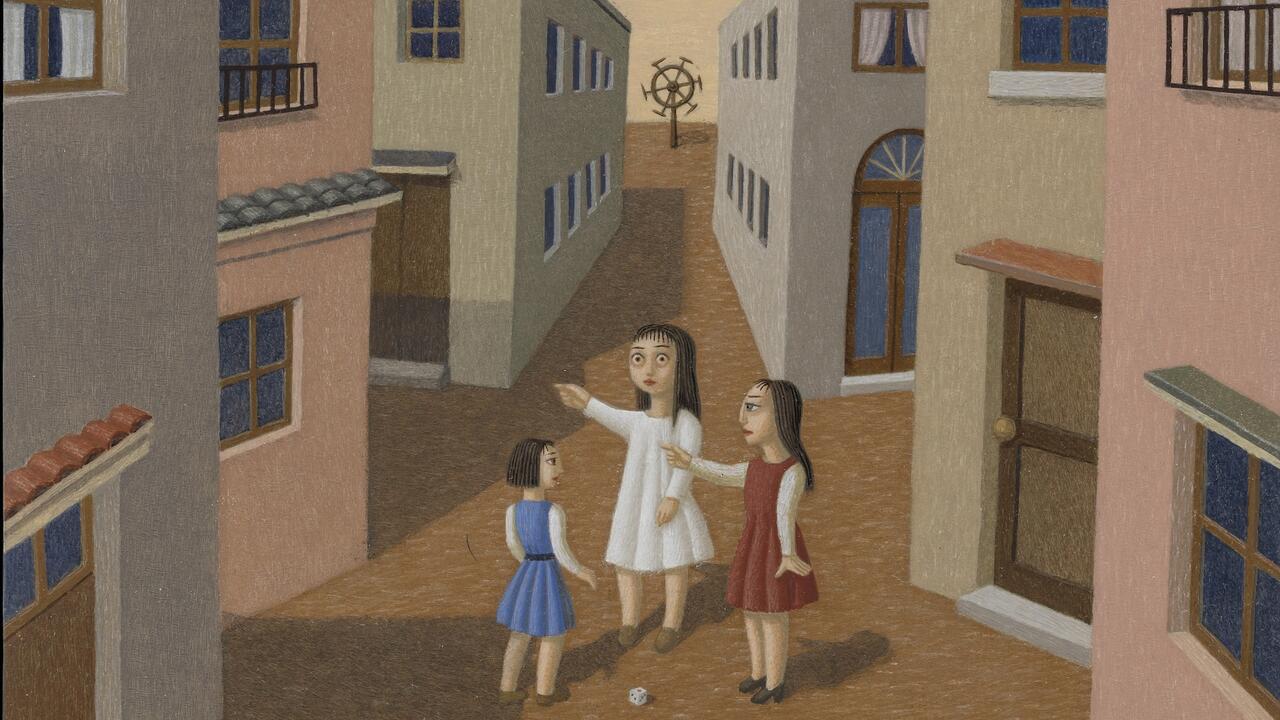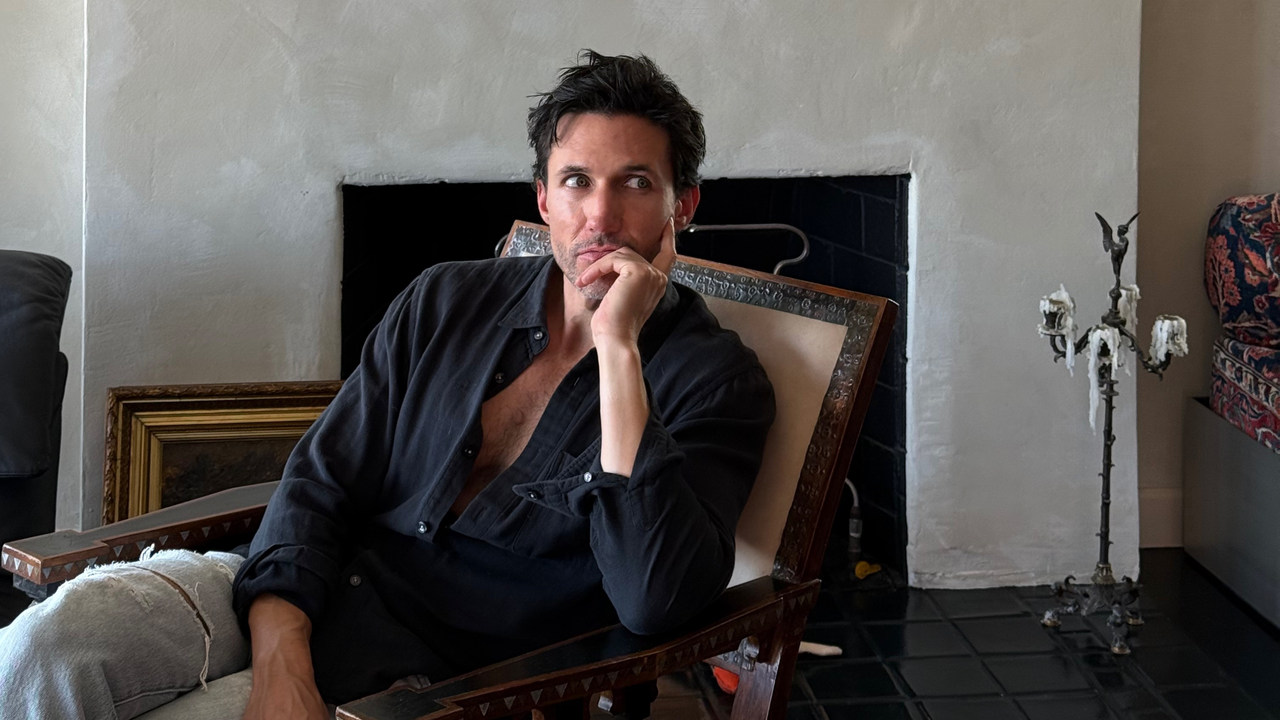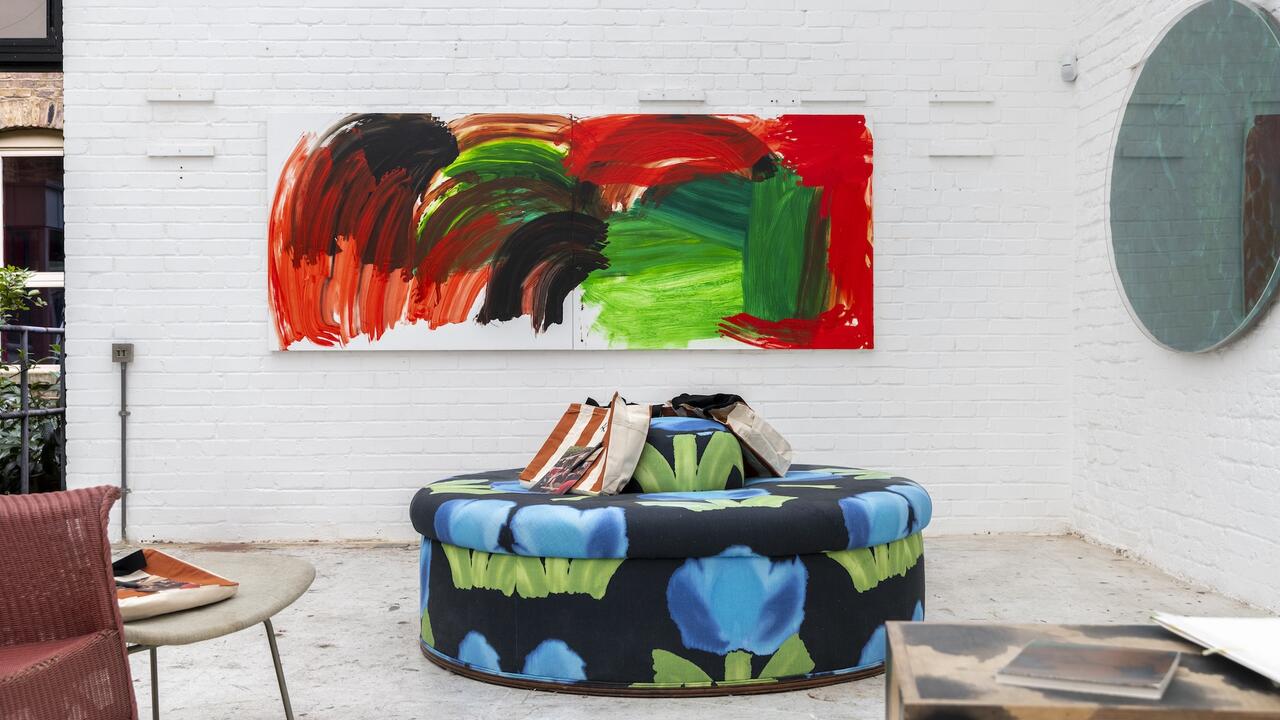Luxe, calme et volupté
Pae White
Pae White
 When Pae White's recent show 'The Actual Tigers' at greengrassi in London was reviewed in a national newspaper, the headline contained a beautiful mistake: her name was printed as 'Pale White'. For an artist whose imagination free-associates with the speed of sunlight and for whom colour is cardinal, this was an eerily apt typo, a tiny haiku to the unexpected interconnectedness of things. The show itself bore this out. It comprised a transparent Perspex grandfather clock benignly positioned beside a chain-mail of over 1000 platinum- and gold-glazed ceramic ingots which drifted across the floor like a summer stream; three gallery windows covered with kaleidoscopic acetate designs of a biomorphic landscape of a full moon, birds and golden fields; and, loitering in the corner, a giant turtle, whose shell could be lifted to reveal a barbecue. Every element of this surreal picnic scene played off the others; light from the windows mottled the surface of the ingots like expensive rainbows, while the mad barbecue juxtaposed with the see-through clock evoked dim, tumbled memories of childhood gatherings populated by eccentric relatives. By day the natural light filtering into the gallery coloured the installation with varying degrees of intensity, and by night, when the gallery was closed, the acetate landscapes were backlit so brightly that their colours spilled out and dissolved into the usually rainy London street like the promise of somewhere warm, somewhere golden and good. Paul Klee could have been writing about White when he observed that 'the artist has studied the world of variety and has found a way in it'. To describe her hybrid approach as fertile is an understatement. Her eclectic influences include postwar textile designer Vera, the West Coast nun Sister Corita's breezy graphic celebrations of modern consumerism and Alexander Calder's mobiles. Her relationship to art history is of the casual pick 'n' mix variety; less about being prescriptive than about brightening up a dull day with whatever tool springs to hand or mind (in fact, she appears to be influenced as much by the weather as by design, as much by the fracturing of sunlight in a puddle or the infinite shapes of the moon as by art history). In other words, White's way is certainly varied; pigeon-holes are an anathema to her as she moves merrily between disciplines. As well as exhibiting in galleries she designs magazine advertisements, shopping bags, catalogues, books and invitations for herself, other artists and galleries. This design work is neither a sideline nor simply a means of earning money; she considers it an integral component of her art practice, a way of invigorating assumptions about value systems, about the function of objects and their worth. Whereas White's exhibitions often tend to embrace the ephemeral (cobwebs, birds, water and mobiles are recurring motifs), her 'commercial' work teasingly spins variations on themes of communication and ownership. For example, neugerriemschneider commissioned White to design a series of 15 advertisements in this magazine; while wonderful to look at, as ads they are, to put it mildly, coy about giving out information. The gallery name is often obscured or even non-existent; artists' names create patterns that obliquely reference the content of their work; and scrambled groups of letters make about as much sense as alphabet soup. White seems to imply that if something - an image, an idea, a feeling - interests you, then it's more fun to be forced to play detective in order really to understand it; or conversely that, if you are interested enough, you will learn more (about yourself and the world) if you let your imagination create connections, meanings and patterns from elements that your reason might dismiss. This approach can also be seen in the countless art catalogues she has designed. Often it is impossible to work out whether an image 'belongs' to White, to the artist whose catalogue it is, or - as when White appropriated images of Vera's textiles for a Jorge Pardo catalogue for example - to someone else entirely. Every element in White's work depends on another either to support or to define it: translucent, shimmering, often overlapping colours repeat themselves before self-destructing or evolving into something else; words blow apart; information is teased from space and then abandoned; signs pile up until they become a component of something else. This interdependence is central to White's work - what would life be like, she seems to be saying, if nothing or no one influenced or needed anything or anyone else? Imagine art without design, or design without art or people who kept their imaginations to themselves. The world would be a very different place, and not a better one. Whether constrained by the limits of page or paper or allowed to run riot in space, White's somewhat restless work always looks as if it has been designed with movement in mind - across media, disciplines or, more literally, through space. Perhaps the most obvious example of this is her mobiles, which she usually makes from hand-painted cardboard cut-outs, which she hangs on string from floor to ceiling. These tiny, floating drawings tend to be so delicate that you can make them move just by breathing on them; when this happens, colours twist and turn to change the whole look of the piece. Her paper and, more recently, Perspex clocks are another case in point: what could be more literally about movement than timepieces? Cobwebs are another of White's fascinations; she spray-paints them and then fixes them to brightly coloured paper. It's easy to see how a web's perfect fusion of design, function and mythology would appeal to her. A long time ago I had a vivid dream in which I was looking at a painting that intrigued me. Suddenly I was allowed to wander around inside it to see how it was made. I was amazed at how liberating it was to look at colour and objects from unexpected angles. I had forgotten about this dream until I started thinking about the capricious, often contradictory, impulses that seem to drive White: the way she isolates components in busy areas, fuses representational images with a kind of dizzy abstraction, makes art that embraces commerce and vice versa. It is maybe surprising that her approach is never bewildering - it's too sunny to make you feel stupid. Chaos can be a bad or a good thing; I know which it is here.
When Pae White's recent show 'The Actual Tigers' at greengrassi in London was reviewed in a national newspaper, the headline contained a beautiful mistake: her name was printed as 'Pale White'. For an artist whose imagination free-associates with the speed of sunlight and for whom colour is cardinal, this was an eerily apt typo, a tiny haiku to the unexpected interconnectedness of things. The show itself bore this out. It comprised a transparent Perspex grandfather clock benignly positioned beside a chain-mail of over 1000 platinum- and gold-glazed ceramic ingots which drifted across the floor like a summer stream; three gallery windows covered with kaleidoscopic acetate designs of a biomorphic landscape of a full moon, birds and golden fields; and, loitering in the corner, a giant turtle, whose shell could be lifted to reveal a barbecue. Every element of this surreal picnic scene played off the others; light from the windows mottled the surface of the ingots like expensive rainbows, while the mad barbecue juxtaposed with the see-through clock evoked dim, tumbled memories of childhood gatherings populated by eccentric relatives. By day the natural light filtering into the gallery coloured the installation with varying degrees of intensity, and by night, when the gallery was closed, the acetate landscapes were backlit so brightly that their colours spilled out and dissolved into the usually rainy London street like the promise of somewhere warm, somewhere golden and good. Paul Klee could have been writing about White when he observed that 'the artist has studied the world of variety and has found a way in it'. To describe her hybrid approach as fertile is an understatement. Her eclectic influences include postwar textile designer Vera, the West Coast nun Sister Corita's breezy graphic celebrations of modern consumerism and Alexander Calder's mobiles. Her relationship to art history is of the casual pick 'n' mix variety; less about being prescriptive than about brightening up a dull day with whatever tool springs to hand or mind (in fact, she appears to be influenced as much by the weather as by design, as much by the fracturing of sunlight in a puddle or the infinite shapes of the moon as by art history). In other words, White's way is certainly varied; pigeon-holes are an anathema to her as she moves merrily between disciplines. As well as exhibiting in galleries she designs magazine advertisements, shopping bags, catalogues, books and invitations for herself, other artists and galleries. This design work is neither a sideline nor simply a means of earning money; she considers it an integral component of her art practice, a way of invigorating assumptions about value systems, about the function of objects and their worth. Whereas White's exhibitions often tend to embrace the ephemeral (cobwebs, birds, water and mobiles are recurring motifs), her 'commercial' work teasingly spins variations on themes of communication and ownership. For example, neugerriemschneider commissioned White to design a series of 15 advertisements in this magazine; while wonderful to look at, as ads they are, to put it mildly, coy about giving out information. The gallery name is often obscured or even non-existent; artists' names create patterns that obliquely reference the content of their work; and scrambled groups of letters make about as much sense as alphabet soup. White seems to imply that if something - an image, an idea, a feeling - interests you, then it's more fun to be forced to play detective in order really to understand it; or conversely that, if you are interested enough, you will learn more (about yourself and the world) if you let your imagination create connections, meanings and patterns from elements that your reason might dismiss. This approach can also be seen in the countless art catalogues she has designed. Often it is impossible to work out whether an image 'belongs' to White, to the artist whose catalogue it is, or - as when White appropriated images of Vera's textiles for a Jorge Pardo catalogue for example - to someone else entirely. Every element in White's work depends on another either to support or to define it: translucent, shimmering, often overlapping colours repeat themselves before self-destructing or evolving into something else; words blow apart; information is teased from space and then abandoned; signs pile up until they become a component of something else. This interdependence is central to White's work - what would life be like, she seems to be saying, if nothing or no one influenced or needed anything or anyone else? Imagine art without design, or design without art or people who kept their imaginations to themselves. The world would be a very different place, and not a better one. Whether constrained by the limits of page or paper or allowed to run riot in space, White's somewhat restless work always looks as if it has been designed with movement in mind - across media, disciplines or, more literally, through space. Perhaps the most obvious example of this is her mobiles, which she usually makes from hand-painted cardboard cut-outs, which she hangs on string from floor to ceiling. These tiny, floating drawings tend to be so delicate that you can make them move just by breathing on them; when this happens, colours twist and turn to change the whole look of the piece. Her paper and, more recently, Perspex clocks are another case in point: what could be more literally about movement than timepieces? Cobwebs are another of White's fascinations; she spray-paints them and then fixes them to brightly coloured paper. It's easy to see how a web's perfect fusion of design, function and mythology would appeal to her. A long time ago I had a vivid dream in which I was looking at a painting that intrigued me. Suddenly I was allowed to wander around inside it to see how it was made. I was amazed at how liberating it was to look at colour and objects from unexpected angles. I had forgotten about this dream until I started thinking about the capricious, often contradictory, impulses that seem to drive White: the way she isolates components in busy areas, fuses representational images with a kind of dizzy abstraction, makes art that embraces commerce and vice versa. It is maybe surprising that her approach is never bewildering - it's too sunny to make you feel stupid. Chaos can be a bad or a good thing; I know which it is here.













